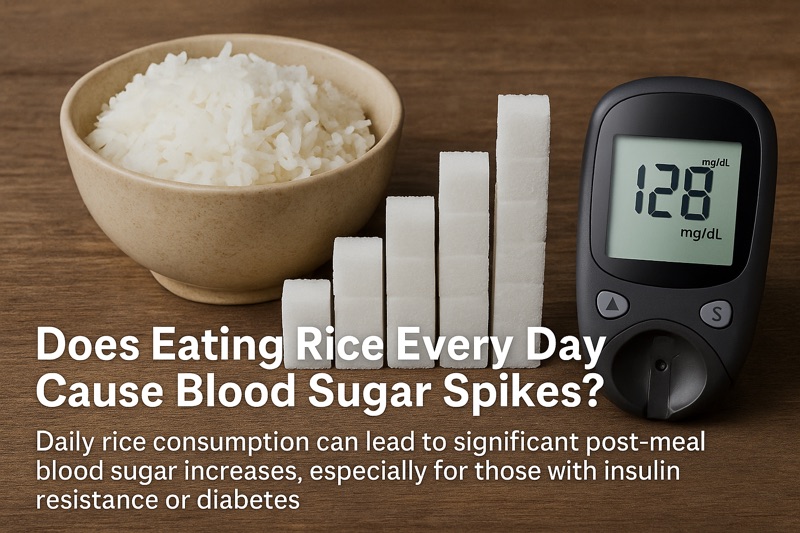Today’s announcement by UK Prime Minister Sir Keir Starmer and the State Health Secretary regarding the abolition of NHS England marks a seismic shift in the landscape of our national health service. As a Senior Clinician and an accredited Clinical Safety Officer and CCIO with many years of frontline experience, my immediate reaction, shared by many colleagues, is one of both apprehension and cautious optimism. While the full details are yet to be unveiled, the stated intention to dismantle the central body responsible for overseeing healthcare delivery across England will undoubtedly have profound implications, particularly for the ongoing digital health transformation, the integration of artificial intelligence, and, crucially, the maintenance of clinical safety.
Based on initial reports and government briefings, it appears the rationale behind this decision is to foster greater regional autonomy and integration, potentially empowering the existing Integrated Care Systems (ICSs) and Integrated Care Boards (ICBs)to take on more direct responsibility for planning and delivering services tailored to their local populations. This could involve a redistribution of functions previously held by NHS England, with some potentially moving to the Department of Health and Social Care, while others are devolved to the ICB level. While the exact structure remains to be seen, this fundamental change necessitates a careful and considered approach to ensure continuity of care and avoid disruption to vital services.
The NHS, despite the dedication of its staff, currently faces significant challenges. Long waiting times for appointments, procedures, and even emergency care are a persistent concern, impacting patient well-being and public confidence. Heavy administrative bureaucracy often diverts valuable resources and clinician time away from direct patient care. Furthermore, variations in patient outcomes across different regions highlight inequalities in access and quality of care. These challenges are well-documented in reports from organisations like the King's Fund and the Health Foundation, and they underscore the urgent need for innovative solutions.
It is within this context of transformation that digital health technologies offer a powerful pathway to address these systemic issues. As a strong advocate for leveraging technology to improve patient care, I believe this restructuring presents a unique opportunity to accelerate the adoption and integration of digital solutions.
Digital Health: A Catalyst for Improvement
Digital health technologies, including AI-driven solutions, interoperable electronic patient record systems (EPRs), and real-time analytics tools, hold immense potential to revolutionise healthcare delivery. Consider the impact of clinical conversational AI tools currently being piloted across several NHS trusts. These tools are demonstrating their ability to automate routine administrative tasks, such as appointment scheduling and pre-assessment questionnaires, freeing up valuable administrative staff time and reducing the burden on clinicians. Early data from organisations I worked with this initiative suggest a reduction in administrative workload by up to 15% in pilot areas.
Furthermore, the increasing adoption of Virtual Ward remote patient monitoring systems is transforming the management of chronic conditions. For instance, patients with heart failure are now being monitored remotely via wearable devices, allowing clinicians to identify potential issues early and intervene proactively, leading to fewer hospital admissions and improved patient outcomes. Studies have shown a potential reduction in hospital readmissions by as much as 20% through such initiatives.
AI-assisted triaging is another promising area. AI algorithms can analyse patient symptoms and medical history to help direct them to the most appropriate level of care, potentially reducing pressure on emergency departments and ensuring timely access to specialists. Pilot programmes have shown promising results in improving the efficiency of triage processes. The digital clinical decision support systems integrated within EPRs can provide clinicians with real-time, evidence-based recommendations at the point of care. This can help to standardise treatment pathways, reduce clinical errors, and ultimately improve patient outcomes. The widespread implementation of such systems, as seen in leading healthcare systems internationally, can contribute significantly to reducing unwarranted variations in care.
Embracing the Future: Digital Transformation as the Engine for a More Efficient NHS
While the abolition of NHS England represents a significant structural change, it also presents a unique opportunity to build a more agile, efficient, and sustainable healthcare system for the future. The government's announcement has highlighted the ambition to unlock significant efficiencies within the NHS by streamlining central functions and empowering local ICBs. It is anticipated that this restructuring will lead to a reduction in administrative overhead and an improvement in overall productivity through better resource allocation and reduced duplication of effort.
Digital healthcare transformation will be the crucial engine driving these improvements across efficiency, effectiveness, productivity, and sustainability:
Efficiency: Digital tools are already demonstrating their ability to streamline processes and reduce waste. As mentioned earlier, clinical conversational AI can automate administrative tasks, freeing up staff and resources. The rollout of AI-powered scheduling tools is projected to save significant clinical hours annually in the coming years. Interoperable EPRs will eliminate the need for paper-based records and manual data entry, significantly reducing administrative burden and the risk of errors. This enhanced data flow will also enable more efficient resource allocation and service planning at the ICB level.
Effectiveness: Digital health technologies are empowering clinicians to deliver more effective and personalised care. AI-driven clinical decision support systems provide real-time insights, leading to more accurate diagnoses and treatment plans. Remote patient monitoring allows for early intervention and better management of chronic conditions, reducing the need for costly hospital admissions. Data from ongoing trials indicates that AI-assisted diagnostic tools have the potential to improve the accuracy of early disease detection, leading to earlier treatment and better patient outcomes. This focus on proactive and personalised care will undoubtedly enhance the overall effectiveness of the NHS.
Productivity: By automating routine tasks, improving workflows, and providing clinicians with better tools and information, digital transformation will significantly boost productivity within the NHS. The increased efficiency gained through streamlined administration and optimised resource allocation directly translates to higher productivity. The widespread adoption of digital tools for virtual consultations and follow-ups will allow clinicians to see more patients within the same timeframe, improving access and reducing waiting lists. There is a national focus on increasing the proportion of outpatient appointments delivered virtually in the near future.
Sustainability: Digital health can also contribute to the long-term sustainability of the NHS. Remote monitoring and virtual consultations can reduce the need for travel, both for patients and clinicians, leading to lower carbon emissions and reduced operational costs. Furthermore, data analytics can provide valuable insights into population health trends, enabling more proactive and preventative approaches to healthcare, potentially reducing the overall demand on acute services in the long run. The government has emphasised its commitment to a "greener NHS," and the expanded use of digital prescriptions is already demonstrating tangible sustainability benefits.
While he abolition of NHS England presents a period of change, it also unlocks a significant opportunity to accelerate the digital transformation of our healthcare system. By embracing these technologies strategically and leveraging the efficiencies, effectiveness, productivity, and sustainability gains they offer, we can build a stronger, more resilient NHS that is fit for the future. The government's announcement underscores the belief in this potential, and it is now incumbent upon healthcare leaders, policymakers, and technology providers to work collaboratively to realise this vision.
Clinical Safety: A Non-Negotiable Imperative
As a Senior Clinical Safety Officer, I must emphasise that this period of structural change necessitates an unwavering commitment to robust Clinical Safety governance. The standards outlined in DCB 0129 (Clinical Risk Management: Standard for IT and digital health systems) and DCB 0160 (Clinical Risk Management: Standard for manufacturers of health IT systems) will be more critical than ever to ensure that all digital health solutions are safe and effective for patient use.
Compliance with the Digital Technology Assessment Criteria (DTAC) will be essential for evaluating the clinical safety, effectiveness, and usability of new digital technologies being introduced across the newly structured NHS. Similarly, adherence to the Data Security Protection Toolkit (DSPT) will be paramount to safeguard patient data and maintain public trust in the security of digital health systems. Furthermore, full compliance with the General Data Protection Regulation (GDPR) will be non-negotiable to protect patient privacy and ensure responsible data handling.
Any restructuring of NHS England must ensure that clear lines of responsibility for clinical safety are maintained and strengthened. The Integrated Care Systems and ICBs will need to build robust clinical safety teams with the necessary expertise to oversee the implementation and use of digital technologies. This includes establishing clear processes for identifying, assessing, and mitigating clinical risks associated with these systems.
Navigating the Transition: Opportunities and Risks
From my perspective as a senior clinician and experienced CSO, the abolition of NHS England presents both significant opportunities and potential risks. The opportunity lies in the potential for greater agility and local responsiveness within the ICBs. This could allow for more tailored adoption of digital health solutions that meet the specific needs of their local populations. Furthermore, a streamlined structure could potentially reduce some of the administrative burden that currently exists.
However, the risks are equally significant. Fragmentation of services, inconsistencies in standards of care, and a lack of national coordination in digital health initiatives are all potential pitfalls. It is crucial that the transition is managed carefully and collaboratively, with clear communication and engagement with frontline clinicians and other stakeholders.
Some Recommendations and Insights
To maximise the opportunities and manage the risks effectively, I offer the following recommendations:
- Clear National Vision and Standards: While empowering ICBs is important, a clear national vision for digital health transformation, underpinned by consistent standards for interoperability, data security, and clinical safety, must be maintained. The Department of Health and Social Care should play a central role in setting these standards and ensuring their consistent application across the new NHS structure.
- Prioritise Interoperability: Investment in interoperable EPR systems that allow seamless sharing of patient information across different care settings within and between ICBs is crucial. This will not only improve the efficiency of care but also enhance patient safety by providing clinicians with a complete view of a patient's medical history.
- Strategic Investment in Digital Skills: The NHS needs to invest in training and upskilling its workforce to effectively utilise digital health technologies. This includes providing clinicians with the necessary digital literacy skills and supporting the development of a digitally skilled workforce within the new ICB structures.
- Robust Clinical Safety Governance at ICS Level: Each ICB must establish a strong clinical safety governance framework, with dedicated resources and expertise to oversee the safe implementation and use of digital technologies. Close collaboration between clinical safety officers across different ICBs will be essential to share best practices and address common challenges.
- Meaningful Engagement with Clinicians: Frontline clinicians must be actively involved in the design, development, and implementation of digital health solutions. Their insights and experiences are invaluable in ensuring that these technologies are user-friendly, clinically relevant, and contribute to improved patient care.
- Phased and Evaluated Implementation: The transition to the new NHS structure and the widespread adoption of digital health technologies should be implemented in a phased manner, with ongoing evaluation and learning. This will allow for adjustments to be made based on real-world experience and ensure that patient safety remains paramount.
- Collaboration with Technology Providers: Technology providers have a crucial role to play in this transformation. They must work closely with NHS organisations to develop solutions that are safe, effective, interoperable, and meet the specific needs of the healthcare system. Adherence to clinical safety standards and a commitment to continuous improvement are essential.
The abolition of NHS England represents a significant undertaking with the potential to reshape healthcare delivery in our country. I believe that by embracing digital health transformation strategically, prioritising clinical safety relentlessly, and promoting a collaborative approach across all stakeholders, we can navigate this transition successfully and ultimately create a more efficient, equitable, and safer NHS for the benefit of our patients. This is a moment for thoughtful leadership, careful planning, and a shared commitment to ensuring the best possible health outcomes for the people we serve.
Dr Krishna Nair, Director of Quality & Innovation, CCIO and CSO.
Innovate Health Consulting Limited. (www.innovatehealthconsulting.com )







 As the British Pound reaches a historic high against the Indian Rupee, questions are being raised about the economic strategies under Prime Minister Narendra Modi’s administration. The weakening Rupee is not just a currency fluctuation but a stark reflection of deeper economic troubles brewing in India.
As the British Pound reaches a historic high against the Indian Rupee, questions are being raised about the economic strategies under Prime Minister Narendra Modi’s administration. The weakening Rupee is not just a currency fluctuation but a stark reflection of deeper economic troubles brewing in India.